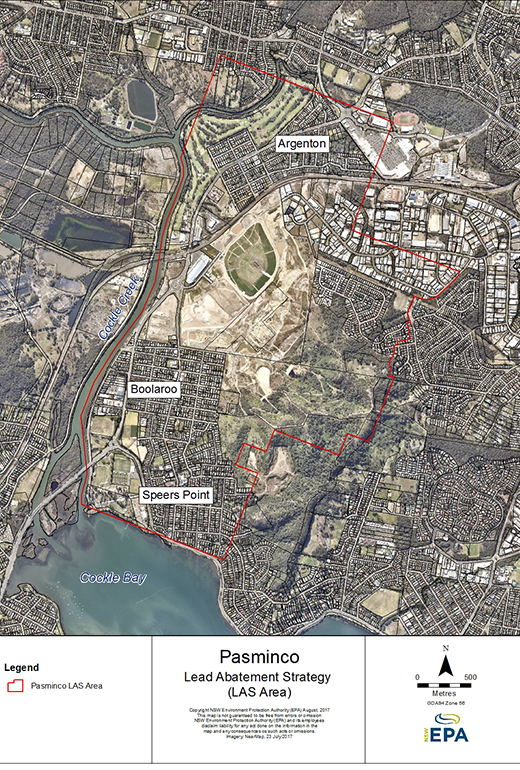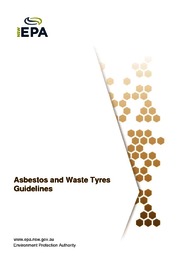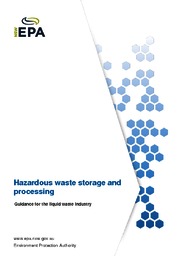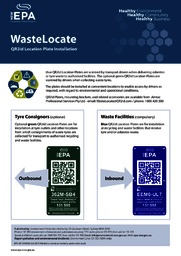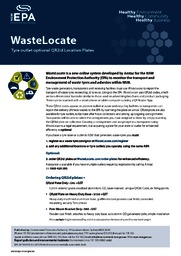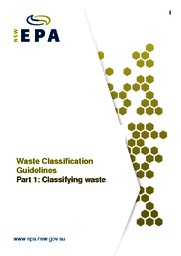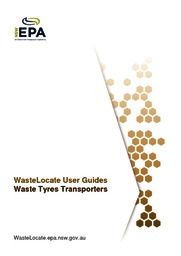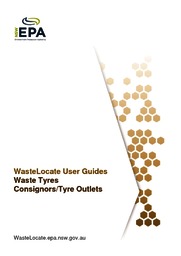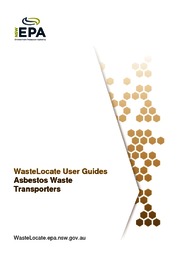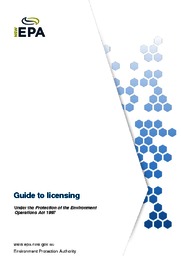Exemptions to waste tracking apply to the following waste types
Waste tracking exemptions
The EPA exempts certain types of waste from some or all tracking requirements under certain circumstances.
Protection of the Environment Operations (Waste) Regulation 2014
Notice of exemption granted under Part 9 in relation to waste tracking
By this notice the Environment Protection Authority (EPA) grants the following general exemption. The notice exempts the persons or classes of persons described herein from certain requirements in relation to the transportation and tracking of waste. The terms used in this notice have the same meaning as in the Protection of the Environment Operations Act 1997 (the Act) and the Protection of the Environment Operations (Waste) Regulation 2014 (the Regulation).
- This exemption has effect from the date of publication and remains in force until revoked or amended by a notice published in the Government Gazette.
Waste to which the exemption applies
- This exemption applies to household problem waste that is trackable waste and that is being transported to a Community Recycling Centre (CRC) that has been approved and established under the NSW Government's Waste Less, Recycle More Initiative.
- This exemption applies to such waste delivered by a householder to a Community Recycling Centre; or collected from a householder, or a temporary location, or a satellite CRC, or orphan household waste collected by a mobile, satellite or central storage facility (CRC) operator.
- It exempts
- a consignor
- a transporter
- a receiver
- An exemption under this notice has effect only if the waste is transported to an approved Community Recycling Centre.
of waste to which this exemption applied from Part 4 of the regulation, bu only in so far as Part 4 applies by virtue of Clause 41(1)(a)of the Regulation.
Conditions relating to the exemption of transporters
- A transporter is exempt under this notice only if the transporter complies with the following conditions:
- for each load of waste transported, the transporter must make a record of the following
- the name and address of the transporter
- the transporter's environment protection licence number- if the transporter is required to be licensed under the Act
- he registration number of the vehicle used to transport the waste
- the type and quantity of the waste transported
- the date on which the waste is delivered to the receiver
- the name and address of the receiver
- the date on which the record was made.
- the transporter must
- retain the record for a period of not less than four years after the date on which the record was made
- make the record available for inspection by an authorised officer on request, and
- give a copy of the record to the receiver.
- for each load of waste transported, the transporter must make a record of the following
Conditions relating to the exemption of receivers
- A receiver is exempt under this notice only if the receiver complies with the following conditions. The receiver must
- retain the copy of the record referred to in paragraph 5 for a period of not less than 4 years after the time the record was made
- make a copy of the record available for inspection by an authorised officer on request.
Interstate movement of waste to which Part 3 applies
- This notice does not exempt any person or class of person from Part 4 of the Regulation in so far as Part 4 applies by virtue of clause 41(1)(b) of the Regulation.
Dangerous Goods requirements
- This notice does not exempt any person or class of person from any requirement under the Road and Rail Transport (Dangerous Goods) Act 1997 or the Regulations made under that Act.
Definitions
- Householder - person who owns, or rents, or lives in a house or tenement, and generates household problem waste
- Temporary location - a location at which a mobile CRC service temporarily collects household problem waste as part of the EPA's Community Recycling Centres Program
- Mobile CRC service - a service in which household problem waste is collected from locations other than a central CRC and transported to either a Satellite CRC or a Central CRC.
- Satellite CRC - a location at which small quantities (less than minor quantities as defined by AS3833 The Storage and Handling of Mixed Classes of Dangerous Goods) of household problem waste can be deposited and stored temporarily, prior to transport to a Central CRC.
- Central CRC - a Community Recycling Centre that has been approved and established as such by the EPA.
- Orphan Waste - household problem waste left abandoned on public land
- Household problem waste - waste generated by householders which Community Recycling Centres are designed to accept and store including
- Paint (water-based, oil -based, and other paint types)
- Used oil
- Batteries (including lead acid batteries, and other types of batteries used by households)
- Domestic gas cylinders (typically LPG, but also other types)
- Conventional tube type and compact fluorescent lamps, and other types
- Smoke detectors
- other types of hazardous waste originating from a household or domestic sources
Note: Not all Household Problem Waste is Trackable Waste.
Dated: 29 July 2016
TONY HODGSON
Manager Hazardous Materials, Chemicals and Radiation
(On behalf of the Environment Protection Authority)
Protection of the Environment Operations (Waste) Regulation 2014
Notice of exemption granted under Part 9 in relation to waste tracking
By this notice the Environment Protection Authority (EPA) grants the following general exemption. The notice exempts the persons or classes of persons described herein from certain requirements in relation to the transportation and tracking of waste. The terms used in this notice have the same meaning as in the Protection of the Environment Operations Act 1997 (the Act) and the Protection of the Environment Operations (Waste) Regulation 2014 (the Regulation).
- This exemption has effect from the date of publication and remains in force until 19 January 2025 or amended by a notice published in the Government Gazette.
- This exemption applies to Pasminco naturally immobilised waste referred to in Immobilised Contaminants Approval 2020/01 that is trackable waste.
- This exemption applies to such waste delivered by a householder; or collected from a householder.
- It exempts
- a consignor
- a transporter, and
- a receiver of waste to which this exemption applies from Part 4 of the Regulation, but only in so far as Part 4 applies by virtue of Clause 41(1)(a) of the Regulation.
- An exemption under this notice has effect only if the waste is transported to a place that can lawfully be used as a waste facility for that waste.
- A receiver is exempt under this notice only if the receiver complies with the following conditions and keeps a record of
- amount of waste received
- date on which the waste is delivered to the receiver.
-
This notice does not exempt any person or class of person from Part 4 of the Regulation in so far as Part 4 applies by virtue of clause 41(1)(b) of the Regulation.
- This notice does not exempt any person or class of person from any requirement under the Road and Rail Transport (Dangerous Goods) Act 1997 or the Regulations made under that Act.
Interstate movement of waste to which Part 3 applies
Dangerous Goods requirements
Definitions
- Householder – person who owns, or rents, or lives in a house or tenement, and generates Pasminco Immobilised Waste.
- Pasminco naturally immobilised waste – Metallurgical furnace flue dust or metallurgical furnace flue dust impacted excavated materials or any mixture of those materials that is located at residential premises inside the Pasminco Lead Abatement Strategy (LAS) Area at Cockle Creek, NSW 2284 (Annexure A - Map).
Dated: 8 January 2020
ASELA ATAPATTU
Director Hazardous Materials, Chemicals and Radiation
(On behalf of the Environment Protection Authority)
Annexure A - Map
